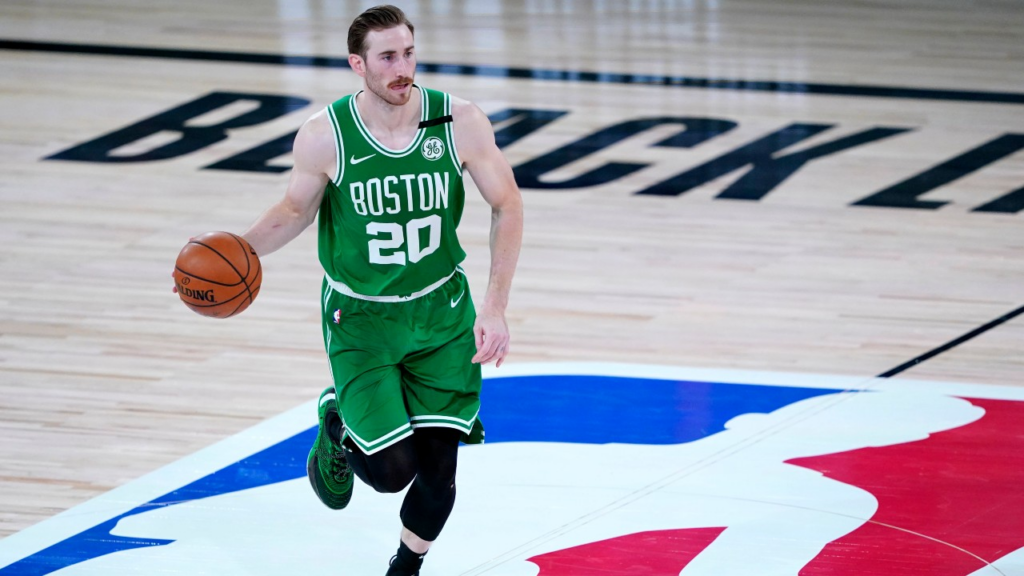Generally, NBA players have to opt in by June 29, one day before NBA Free Agency officially begins. If they do not opt in by that time, they are testing their luck in the open market, where who knows what may happen. Usually players can get better deals, but some may not be as lucky.
What are the 2 types of free agency?
There are two types of free agency: unrestricted and restricted free agency. Unrestricted free agency is quite straightforward: an unrestricted free agent can choose to sign with any time of their choosing.

Restricted free agency, on the other hand, isn’t as simple; there are conditions that dictate a restricted free agent regarding who and when they can sign a new contract. The team which the restricted free agent is currently contracted to has a principle known as the right of first refusal.
Going back a few steps, a player approaching free agency must first be given a qualifying offer by their current team, should they want to keep them. This qualifying offer is similar to a 1 year extension; if the player accepts, they play one more season before becoming an unrestricted free agent. If the player rejects the qualifying offer, they are now a restricted free agent.
Let’s say a new team wants to sign a restricted free agent, and they offer him an offer sheet, which is a contract of at least 2 seasons. This is where the right of first refusal principle comes into play: the restricted free agent’s current team can choose to match the offer sheet. If they match the offer sheet, the player stays with their current team on the terms listed in the offer sheet. If the team decides not to match the offer sheet, the player is now an unrestricted free agent and can sign with a new team. In short, the right of first refusal is a way for teams to have an advantage in free agency.
A very recent example of this happened with Phoenix Suns star DeAndre Ayton (restricted free agent) who was in contract negotiations with the Suns. When Ayton was not being offered the max deal that he wanted with the Suns, the Indiana Pacers emerged to the scene where they offered him $133 million over 4 years. Ayton had initially agreed with the Pacers, but had to return to the Suns since they had quickly matched Indiana’s offer.
What is a team option versus a player option?
A team option is when the team has the right to keep a player for another year. For example, if a player has a two year contract with a team option for the third season, the team can choose to exercise that option which would mean the player would have to stay for the third season whether they want to or not. If the team does not exercise their option then the player is allowed to go freely in the open market. An example of a team exercising their option is the Sacramento Kings with former first round draft pick Davion Mitchell and the Los Angeles Lakers who picked up the team options of Stanley Johnson and Wenyen Gabriel. Most team options are only for one year, except in some rookie contracts where the team option can be before the third and fourth seasons.
A player option is when a player has the right to decide whether they want to stay with their current team for one more year or hit the free agency market to be able to talk to other teams. Oftentimes, players do this when they feel they can opt out and look for a bigger, possibly longer term contract. For example, if a player has a three year contract with a player option for the fourth season, the player can choose to exercise that option, if he does not, he becomes an unrestricted free agent. Brooklyn Nets star Kyrie Irving recently exercised his player option for the 2022-2023 season and will play out his last year with the Nets before he becomes a free agent again.
Oftentimes a player quickly exercises their player option, especially when they know that hitting the market could be risky for their career. That is one major reason why Russell Westbrook opted into his player option with the Lakers, where he will make a net of $40 million in the 2022-2023 season, but would not be guaranteed that type of money with any other team.
Sometimes, betting on one’s self in order to get a better contract may not go as well as planned. Just ask Dennis Schroder, who was offered a great deal with the Lakers at the time, but chose to go to the open market where he ended up getting much, much less than he anticipated.
All in all, free agency terms can be quite confusing, but it is a lot easier when it is broken down. Players and teams have until June 29th each year to either opt in or opt out of their team/player options. After that, players hit free agency, and depending on whether they are an unrestricted or restricted free agent, may find their way to a new team.
